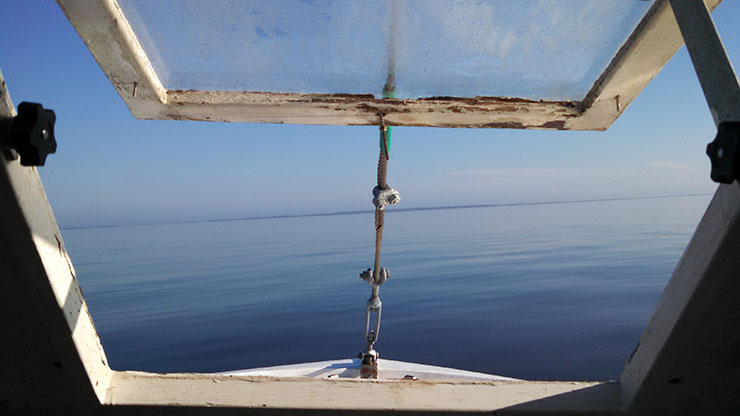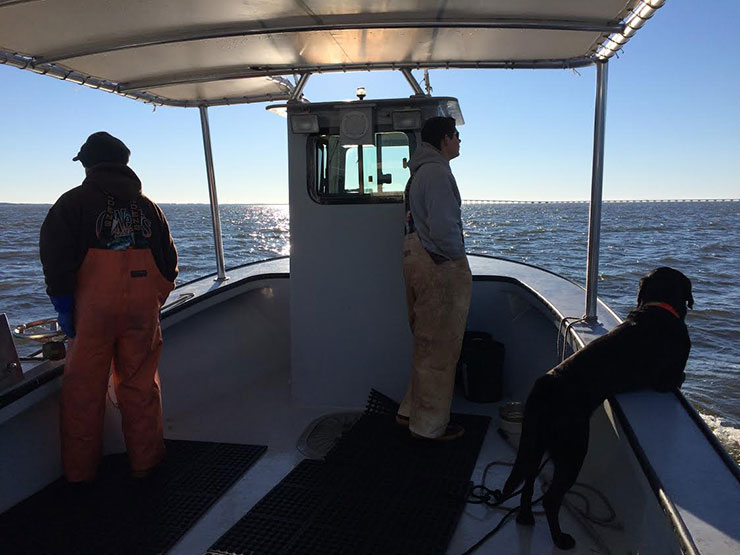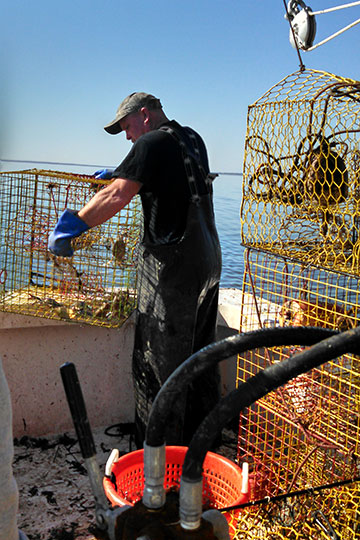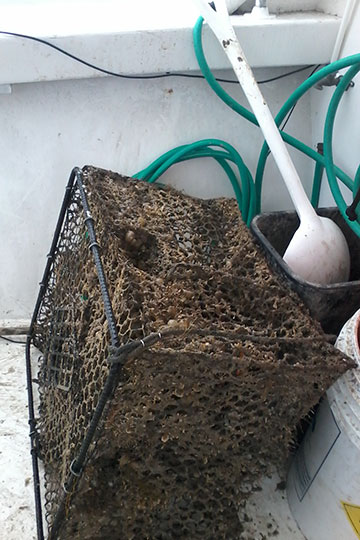On the Water Collecting Data and Debris
By Gloria Putnam
Posted Feb. 3, 2015
In mid January, co-worker Sara Mirabilio and I participated in water-based crab pot removal project organized by the North Carolina Coastal Federation. Twelve two-man crews of local fishermen were a central part of the project. Two of these crews allowed us to ride along and test a new data-collection tool.
The fishermen’s goal each day was to find and remove crab pots that had been abandoned or lost. These pots, like other derelict gear, pose navigational safety issues. They also can affect other fishermen’s gear, such as tear nets and continue to trap crabs and other marine life until they break apart or are removed.
I rode along with Drew Whitfield and mate Joseph Andrews, who sailed out of Wanchese. Sara went with Troy Outland and mate Cody Rayburn out of Manns Harbor.

While the fishermen pulled pots from the water and emptied their contents, Sara and I tested a data-collection app we created using free Cybertracker software. The app, that we had loaded onto tablet computers, is designed to efficiently and accurately capture geo-referenced data for each of the pots we collected.
Location, water depth and bycatch were of primary interest. This information provides insight on “hotspots” of accumulation and potential impacts of the derelict gear on habitat and fisheries.
Sara and I calculated that we had encountered 136 pots in the 19 hours we spent with these fishermen. Only seven of those pots could not be retrieved.
Crabs — both dead an alive — were in most pots. Many of the pots had blown miles away from where they were originally set and many were becoming overgrown with vegetation. One was a peeler pot that was thought to have been set last spring.
I learned a lot from seeing the retrieval work firsthand. And I think with a few tweaks, the app will be ready for fishermen and others to use during future projects focused on marine debris removal.
Although still unofficial, Troy and Cody appear to have collected the most number of pots of any crew: 166 in their three days out.

The pots we found varied in type and condition.
|
|
|
On one day out, Drew and Joseph found 41 pots.

The app allowed us to generate data that can help us identify potential hotspots where abandoned crab pots might collect.

Want to learn more about the crab pot project? Go to www.nccoast.org.
- Categories:




